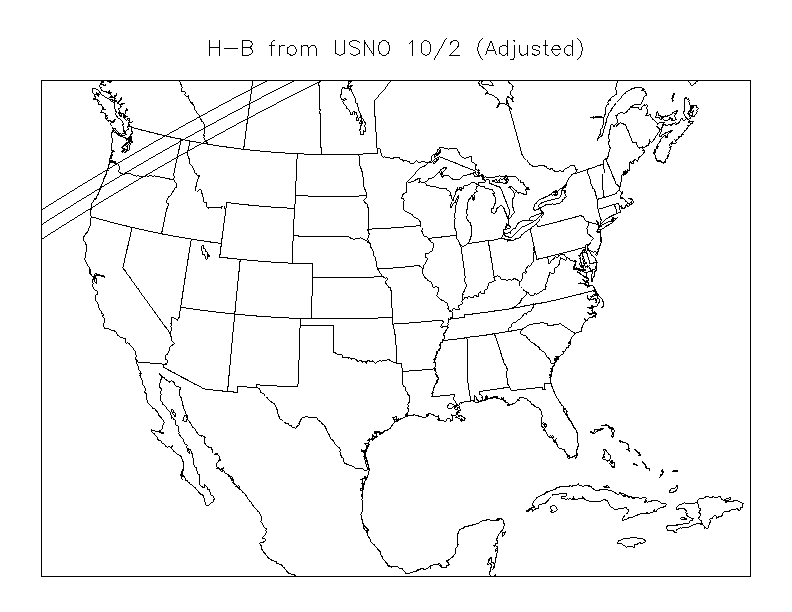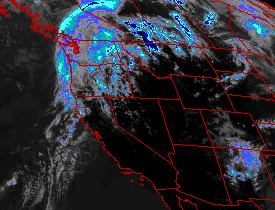

Seven teams were deployed for this event. The final prediction was for a center line passing through Glacier National Park, MT and Pendleton, OR. The original plan was to deploy Team 1 on this centerline, each successive team was to take up a positions at 150km spacings on lines parallel to the centerline.
| Team # | Personnel | Inst. | Tel/Det | Location | Result |
|---|---|---|---|---|---|
| 1 | M. Buie M. Golden |
Lowell MIT |
C-14 CCD |
Idaho - Montana border | Heavy clouds during event |
| 2 | T. Dunham J. Stansberry |
Lowell | C-14 CCD |
ENE of Boise, ID | Clouds throughout, thinner near event |
| 3 | M. Persson R. Nye |
MIT | C-14 CCD |
SW of Boise, ID | Heavy clouds |
| 4 | R. Marcialis J. Spitale |
LPL, UA | C-14 CCD |
SW of Twin Falls, ID | Heavy clouds |
| 5 | D. Wellnitz Y. Fernandez |
U. MD | C-14 Phot |
Snowville, UT | Clear, results unknown |
| 6 | L. Wasserman R. Howell |
Lowell U. WY |
C-14 Phot |
NW of Beatty, NV | Clear, no occultation seen |
| 7 | R. Millis | Lowell | 31" Phot |
Anderson Mesa, AZ | Clear, no occultation seen |
The weather was not very good for the northwest at the time of the event. On the left is a satellite image at 2pm MST prior to the event. The right image shows the cloud cover minutes before the close approach. This fast moving front pretty much wiped out most of the interesting territory for the observation.


Below shows a map with the site locations (blue/purple circles). The dark line running from southwest to northeast across Oregon, Idaho and Montana is the approximate centerline that we were trying to reach.
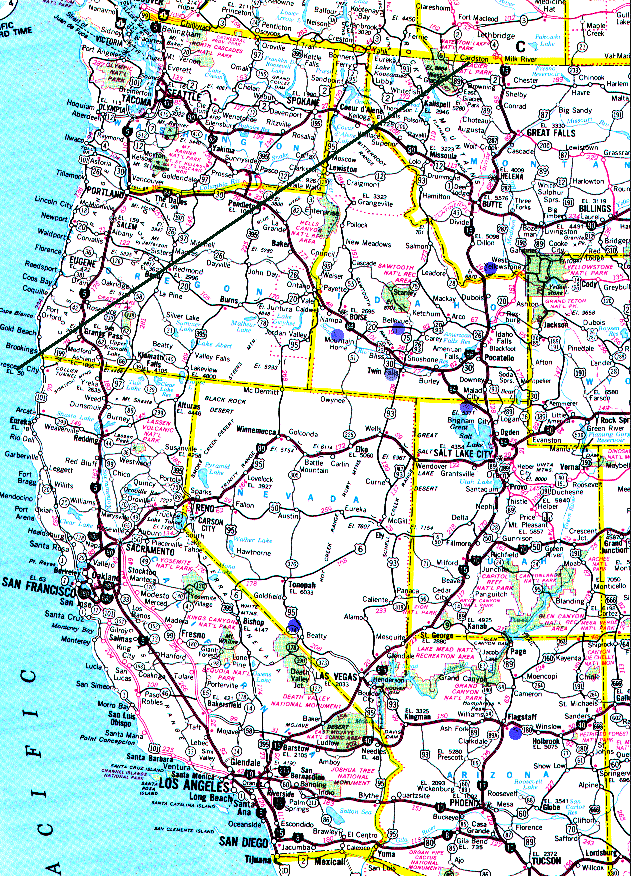
Three nights of data were taken on the occulation star field with the comet included. These images were taken at the 1.5-m telescope at the US Naval Observatory, Flagstaff Station. This table summarizes the final prediction information collected. Note that this prediction set was run against Don Yeomans orbit #41 and a star coordinate of RA=17:29:59.845, Dec=-04:48:09.45, J2000.
| UT Date | Frames | Seeing (") | dRA (") | dDec (") |
|---|---|---|---|---|
| 96/10/02 | 5 | 1.4 | -0.571 +/- 0.035 | 0.067 +/- 0.041 |
| 96/10/04 | 11 | 2.0-2.5 | -0.459 +/- 0.021 | 0.393 +/- 0.028 |
| 96/10/05 | 6 | 1.8-2.2 | -0.369 +/- 0.044 | 0.508 +/- 0.107 |
The final two columns show the correction to the emphemeris and star position based on the astrometric measurements. These numbers have not been combined into a single average. Clearly the difference from night to night is larger than the uncertainties and other affects were "corrupting" the prediction. Oddly enough, these different corrections all predict nearly identical tracks though at slightly different times. One possible source of error is from a systematic shift caused by the stars always being on the same pixels from night to night, but with the comet moving across the CCD from one night to the next. The optical distortions are not particularly severe with the USNOFS camera so this error should be small.
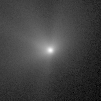 A much larger effect is recognized when we ask what is being measured on the
comet and how does this measurement relate to the solid body nucleus hidden
in the shroud of the coma.
We sent an extraction of the image of the comet (shown at left)
to Casey Lisse at the University of Maryland where he fit a function to
the coma. From
this fit he determined an offset from the center-of-light to a guess at
where the dust and gas emanate (presumably the solid body). From this analysis
he got an offset of dRA=0.045" and dDec=-0.35" which we applied to the
above corrections. The image below is an expanded representation that
shows this additional offset.
A much larger effect is recognized when we ask what is being measured on the
comet and how does this measurement relate to the solid body nucleus hidden
in the shroud of the coma.
We sent an extraction of the image of the comet (shown at left)
to Casey Lisse at the University of Maryland where he fit a function to
the coma. From
this fit he determined an offset from the center-of-light to a guess at
where the dust and gas emanate (presumably the solid body). From this analysis
he got an offset of dRA=0.045" and dDec=-0.35" which we applied to the
above corrections. The image below is an expanded representation that
shows this additional offset.
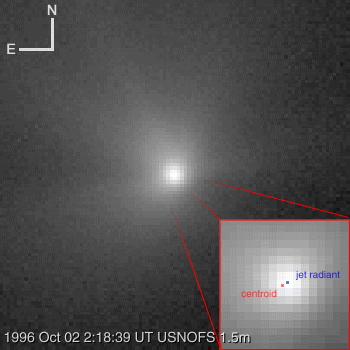
This analysis is probably sensitive to the seeing and subsequent evolution of the coma. This offset was only determined from the data on 96/10/02 so our "final" prediction uses this offset applied to the first set of USNOFS frames.
